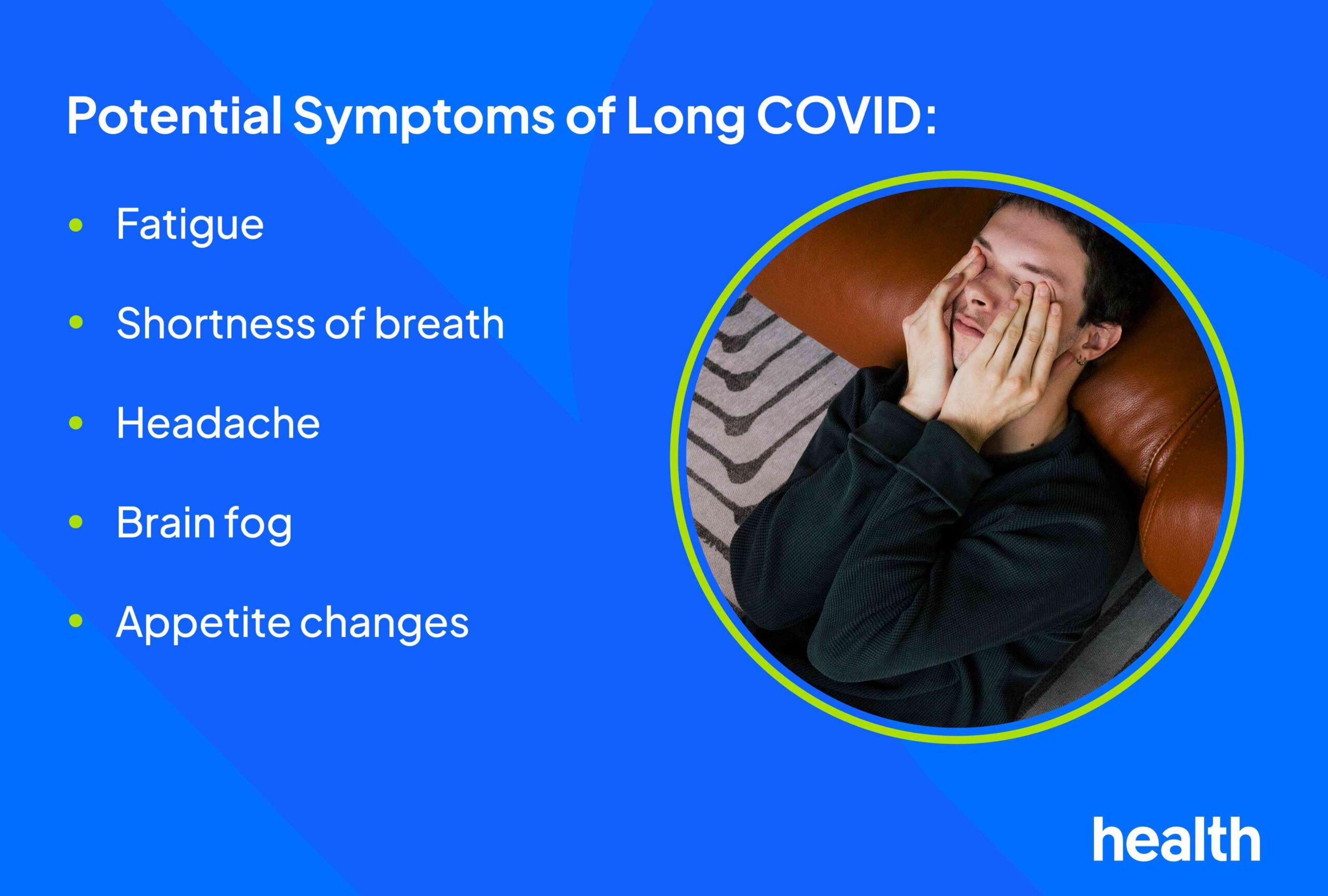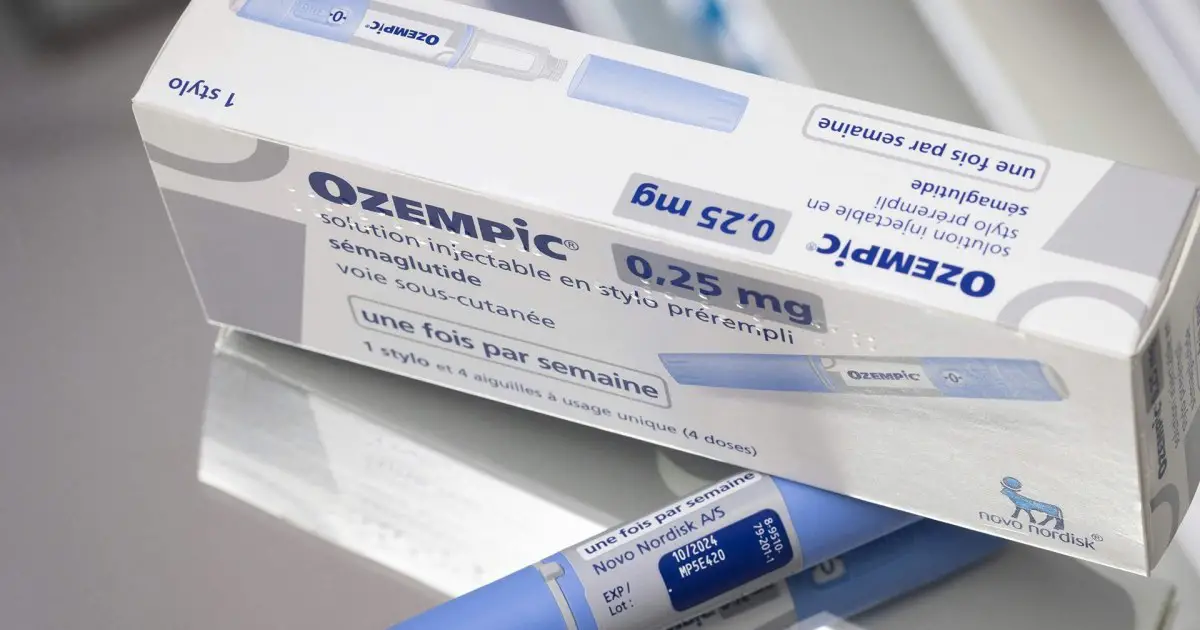
[ad_1]
:max_bytes(150000):strip_icc():format(jpeg)/Health-LongCovid-BLUE-horiz-fbef8d0c0f314d05b2ab5942b6c01c95.jpg)
Long COVID, also known as post-acute sequelae of SARS-CoV-2 infection (PASC), refers to a range of symptoms that persist after a COVID-19 infection. These symptoms can vary widely and affect multiple organ systems. They can range from mild to disabling and may come and go. Long COVID symptoms can last weeks, months, or years, significantly affecting quality of life.
The Centers for Disease Control and Prevention (CDC) defines long COVID as having at least one symptom for at least three months after a COVID infection. Healthcare providers have documented more than 200 of these symptoms. Fatigue, brain fog, and fever are among the most common long COVID symptoms.
Experts do not know how many people have been or will be affected by long COVID. However, some estimate that between 10-30% of people who get COVID will experience long COVID symptoms. Anyone who has had COVID—including adults and children—is at risk for developing the condition.
Long COVID is more common in people who had a severe COVID infection, but people who had a mild case of COVID can also experience lingering symptoms. People who did not know they were initially infected can develop long COVID, and those who seemingly recover from COVID can develop long COVID symptoms later.
Design by Health / Getty Images
Symptoms of long COVID can affect your entire body. This is similar to other chronic illnesses that can occur after certain infections and are poorly understood, including myalgic encephalomyelitis/chronic fatigue syndrome (ME/CFS), which can affect many body parts and cause fatigue that doesn’t go away with rest.
People with long COVID have reported the following body-wide symptoms:
- Fatigue
- Post-exertional malaise, meaning symptoms get worse after physical or mental exertion
- Joint or muscle pain
- Weakness
- Fever or chills
Dyspnea (shortness of breath) is one of the most common long COVID symptoms. It and other lung symptoms may occur with scarring or changes to the structure of the lungs. In fact, about 6% of people still need supplemental oxygen 60 days after treatment for an initial COVID infection.
Common lung symptoms include:
- Trouble breathing
- Persistent coughing
- Reduced endurance (ability to exercise) due to trouble getting enough oxygen
Long COVID can lead to heart problems, too. Inflammation of the heart muscle (myocarditis) is one serious complication that can occur after a COVID infection. Myocarditis or other damage to the cardiovascular system can lead to the following symptoms:
- A racing or pounding heart (heart palpitations)
- Irregular heartbeat (arrhythmia)
- Chest pain
- Shortness of breath
- Autonomic dysfunction (dysautonomia), a complication in which basic bodily functions are disrupted
The nervous system includes the brain, spinal cord, and nerves. A range of long COVID symptoms may stem from damage to the nervous system. Inflammation is one known possible cause of this damage.
Physical symptoms that can result from disruption to the nervous system include:
- Headaches
- Dizziness or lightheadedness after standing up
- Tingling sensation, or feeling of pins and needles, in certain areas
- Changes in smell or taste
- Seizures
Changes to the nervous system may also lead to mental and emotional symptoms, such as:
- Trouble focusing or concentrating, also known as brain fog
- Memory lapses
- Sleep issues, including insomnia and restless legs syndrome
- Depression
- Anxiety
Some long COVID symptoms involve the digestive system. There are several possible causes of these symptoms. For example, researchers have found that people with long COVID symptoms tend to have an overgrowth of certain bacteria in their gut. This imbalance of microbes in the gut is called dysbiosis.
Digestive symptoms of long COVID may include:
- Changes to appetite
- Abdominal pain or bloating
- Diarrhea
- Constipation
- Heartburn
Other symptoms reported by people with long COVID include:
- Skin rashes
- Hair loss
- Tinnitus (ringing in the ears) or hearing loss
- Jaundice (yellowed skin or eyes)
- Changes in vision
- Swelling in the neck
- Shaky hands
- Changes to the menstrual cycle and worsened premenstrual symptoms
- Erectile dysfunction (difficulty getting or keeping an erection)
Children usually experience mild COVID infections, and experts once believed they had particularly low rates of long COVID. However, new research indicates that, similar to adults, between 10-20% of children who had an acute COVID infection develop long COVID.
Children exposed to the COVID-19 virus are at particular risk from the virus’ inflammation. When inflammation gets out of control and begins to cause dysfunction in several organs, it is called multisystem inflammatory syndrome (MIS-C in children). This can occur even in children who have no initial COVID symptoms. MIS-C typically develops two to six weeks after a COVID infection.
Children ages 5-11 are most commonly affected by MIS-C. Experts do not yet know why some children develop MIS-C and others do not. Fortunately, MIS-C is rare and becoming rarer over time.
MIS-C can affect many organs, including the heart, lungs, kidneys, brain, and gut. Symptoms of MIS-C may include:
- Persistent fever (all children with MIS-C have this symptom)
- Stomach pain
- Diarrhea or vomiting
- Skin rash
- Lightheadedness or dizziness
- Bloodshot eyes
MIS-C symptoms typically resolve within one to four weeks, and outcomes are generally good.
Long COVID is not contagious, meaning it cannot be passed between people. Although you are contagious during an initial COVID infection, you do not continue to be contagious throughout the time you experience long COVID symptoms.
However, if cough is one of your symptoms, remember to cover your mouth to prevent passing any other germs to people around you.
Long COVID can involve many hard-to-explain symptoms that range in severity or come and go over time. This may feel confusing, and you may be concerned that your healthcare provider won’t take your symptoms seriously.
Long COVID is increasingly recognized in the medical field as a legitimate and potentially serious condition. It is important to report it to get the treatment you need and to give researchers more information about the condition.
If you have any persistent symptoms listed above after a COVID infection, make an appointment with your healthcare provider. If you have severe symptoms, including any of the following, seek emergency medical care:
- Trouble breathing
- Pale, gray, or blue skin or lips
- Lasting pressure or pain in your chest
- Severe abdominal pain
- Extreme confusion or strange behavior
- Inability to wake up or to stay awake
Long COVID is a group of symptoms you can experience for weeks to years after a COVID infection. The symptoms of long COVID are diverse, and they can affect multiple organ systems. They can range from fatigue to diarrhea to skin rashes. This makes long COVID a complex and challenging condition to manage. However, healthcare providers learn more about this condition and how to treat it every day.
If you develop long COVID symptoms, tell your healthcare provider. Starting treatment can help you manage your symptoms and avoid potentially serious complications.
[ad_2]
Source link





